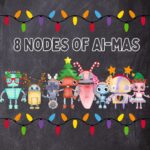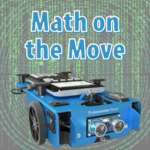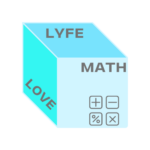A Few of My Favorite Things- Non-Curricular Tasks
Within the past few years, Peter Liljedahl’s book, Building Thinking Classrooms in Mathematics for grades K-12, has blasted off in the mathematics education world! This popular book outlines 14 Teaching Practices for Enhancing Learning- all focusing on a math classroom. Over many years of research in a variety of schools and locations, he noticed that students were not thinking about math. Enter his 14 best practices to improve how we get students to think about math.
The tasks we give during a math class, based on his research, are based off of years of institutional norms. The way our parents learned math is the way that we learned math is the way that many classrooms still teach math. Not much has changed about the algorithmic focus on how teachers teach math concepts. While many elementary schools, especially in NY state, have shifted to using Singapore Math Strategies, which allow for deeper student understanding, the math world is still believed to be a step by step procedure that needs to be remembered.
The first chapter of the book is about introduces Curricular and Non-Curricular Tasks. Instead of telling students the procedure or the answers, these tasks allow students to think for themselves or in a small group. These tasks are thinking tasks that get students to think about math.
Starting off with Non-Curricular tasks to introduce students into the change of thinking, is the best way to introduce tasks to a classroom. Many of these tasks are Low Floor High Ceiling tasks. Low Floor High Ceiling Tasks are designed to be accessible to all students while offering opportunities for advanced exploration. These tasks enable students to work at their own pace and delve into varying levels of complexity, allowing for differentiated learning experiences.




One of my favorite examples of Low Floor High Ceiling tasks is Which One Doesn’t Belong. Students can choose which ever square they think doesn’t belong and have to explain their reasoning as to why they chose what they did.
Looking at the pink square above, students could say some of the following:
- 36 is the only number is a 3 in the tens place
- 36 is the only number is a 6 in the ones place
- 9 is the only single digit number
- 123 is the only 3 digit number
- 99 is the only number that has the same digit in the tens and ones place
- 36 is the only even number
- 123 is the only number not divisible by 9
- 123 is the only number with a two in the tens place
- Can you think of more?
The point of Which One Doesn’t Belong is there is not just one right answer. Students can use a simple explanation or one with intricate vocabulary.
Non-curricular tasks allow students to change how they are thinking about math without the pressure of adding the curriculum piece to the tasks. Students can take more risks. Curricular Tasks are related to the content that you are teaching them. Non-Curricular tasks can be used as Curricular Tasks depending on the ones you choose. I will post another post soon focusing on Curricular Tasks!
Here are some other favorite websites of mine!
Here are some books that I love to pull from as well!
- The Original Area Mazes
- The Original Area Mazes Volume Two
- One-Minute Mysteries and Brain Teasers
- The Awesome Book of One-Minute Mysteries and Brain Teasers
- Classroom-Ready Rich Math Tasks Grades K-1
- Classroom-Ready Rich Math Tasks Grades 2-3
- Classroom-Ready Rich Math Tasks Grades 4-5
- Classroom-Ready Rich Algebra Tasks Grades 6-12
- Open Middle Math Problems That Unlock Student Thinking 6-12
- Rich and Engaging Mathematical Tasks Grades 5-9
- 101 Two Truths and One Lie Math Activities for Grades 3, 4 & 5
- 101 Two Truths and One Lie Math Activities for Grades 6-8
- 101 Daily Which One Doesn’t Belong Math Activities for Grades 1-8
Stay tuned for more Building Thinking Classroom blogs!
Peter Liljedahl’s Building Thinking Classroom Books:




